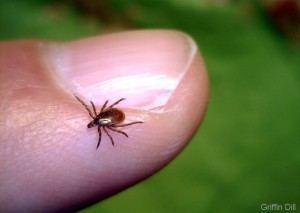Following up on our previous post, NPR has an article, with creepy video, explaining possibly way more than you want to know about how ticks grab on and dig in. It also has some useful advice on removing ticks . . .
Spring is here. Unfortunately for hikers and picnickers enjoying the warmer weather, the new season is prime time for ticks, which can transmit bacteria that cause Lyme disease.
How they latch on — and stay on — is a feat of engineering that scientists have been piecing together. Once you know how a tick’s mouth works, you understand why it’s impossible to simply flick a tick.
The key to their success is a menacing mouth covered in hooks that they use to get under the surface of our skin and attach themselves for several days while they fatten up on our blood.

